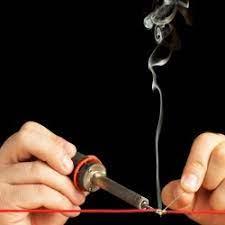What is a fume extractor and how does it work to improve air quality. A fume extractor is a device designed to remove harmful fumes, gases, particles, and odors from the air in various industrial, commercial, and residential settings.
These fume extractor play a crucial role in maintaining a safe and healthy environment by capturing and filtering airborne contaminants.
In this answer, we will explore the different types of fume extractors, their working principles, and the benefits they provide in improving air quality.
Types of Fume Extractors
Fume extractor come in different types, each designed to address specific air pollution concerns. The main categories include:
Local Exhaust Ventilation (LEV) Systems
LEV systems are commonly used in industrial settings to extract fumes directly at the source.
These systems typically consist of hoods or capture devices placed near the emission point, connected to a ventilation system that removes the contaminants from the area.
Portable Fume Extractors
Portable fume extractor are versatile units that can be moved around to capture fumes and particles in various locations.
They are commonly used in welding, soldering, painting, and other tasks that produce harmful airborne pollutants.
Ducted Fume Extractors
Ducted fume extractor are integrated into existing ventilation systems.
They capture and remove fumes through a network of ducts that connect to different areas or emission points, allowing centralized control and extraction.
Working Principles
The working principles of fume extractor vary depending on the type and specific design, but they generally involve the following key components:
Capture Device: The capture device, such as a hood or a flexible arm, is positioned near the source of fumes or particles.
It ensures efficient collection of the contaminants before they disperse into the surrounding air.
Airflow System
Fume extractor utilize an airflow system, usually comprising a fan or blower, to create suction and draw the contaminated air into the unit.
Filtration System
Once the contaminated air is drawn into the fume extractor, it passes through a filtration system.
This system consists of filters designed to capture and remove specific types of pollutants, such as particulate filters, activated carbon filters, or HEPA filters.
The filtration media effectively traps the contaminants, ensuring that only clean air is released back into the environment.
Exhaust System
After the filtration process, the purified air is released back into the surrounding area.
In some cases, the purified air is exhausted to the outside environment, while in others, it is recirculated back into the workspace after passing through additional filtration stages.
Benefits of Fume Extractors
Fume extractors offer several benefits in terms of improving air quality and ensuring a safe working or living environment:
Health and Safety
By effectively capturing and removing harmful fumes, gases, and particles, fume extractors protect individuals from respiratory problems, allergies, and other health issues caused by prolonged exposure to airborne pollutants.
Compliance with Regulations
In many industries, there are strict regulations and standards regarding air quality and worker safety.
Fume extractors help organizations comply with these regulations, avoiding fines, penalties, and potential legal consequences.
Increased Productivity
A clean and healthy working environment leads to increased productivity and employee satisfaction.
fume extractor eliminate unpleasant odors, reduce eye irritation, and minimize the risk of respiratory discomfort, allowing workers to focus on their tasks more effectively.
Protection of Equipment and Infrastructure
Certain pollutants, such as corrosive gases or particulates, can damage equipment, machinery, and infrastructure over time.
Fume extractor prevent these pollutants from settling on surfaces, extending the lifespan of valuable assets and reducing maintenance costs.
Conclusion
Fume extractors are essential devices for improving air quality and maintaining a safe environment in various settings.
By efficiently capturing and removing harmful fumes, gases, and particles, they play a vital role in protecting human health, ensuring regulatory compliance, and promoting productivity.
Understanding the different types of fume extractors and their working principles is crucial in selecting the most suitable system for specific air pollution challenges.
